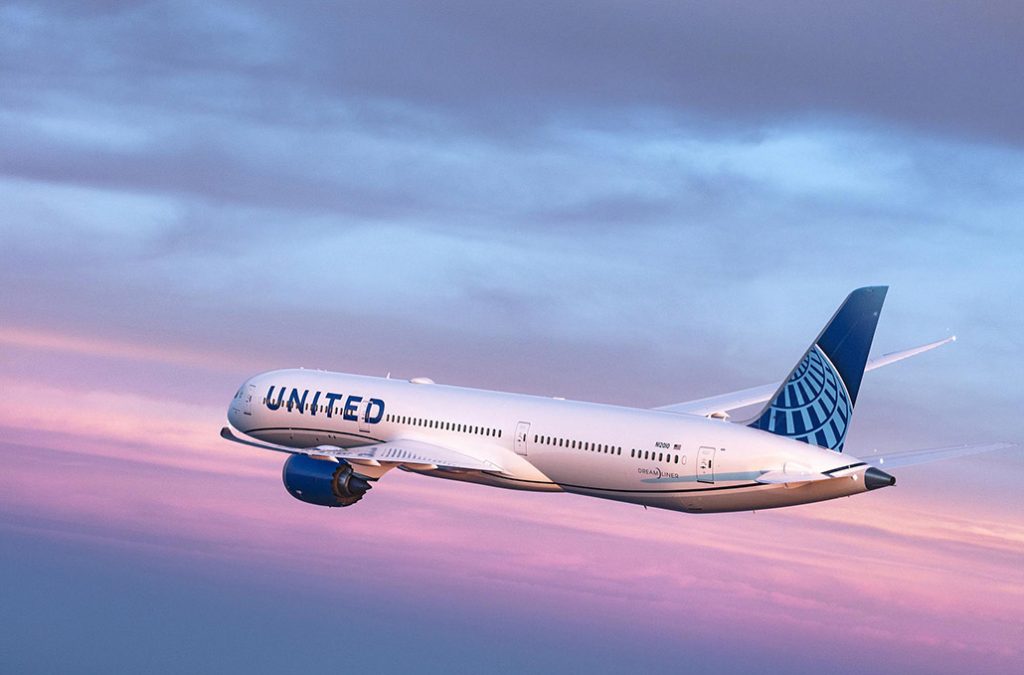Every journey begins not with sightseeing, but with the search for flight tickets. When I decided to embark on a deep desert adventure to Tucson, Arizona, the first challenge I faced was how to travel from Europe to this hidden desert city in a smooth and comfortable way. Unlike cities like Los Angeles or New York, Tucson doesn’t offer direct international flights. That made careful planning and choosing the right layover points absolutely essential.
I will share my personal experience and insights from researching multiple routes. From flight options and stopover cities to total travel time, airline services, and airfare, this guide is designed to help all travelers traveling from Europe to Tucson make an informed decision and enjoy a smoother journey.
1. Why Flight Planning to Tucson Requires Extra Attention
Before I started doing research, I didn’t know much about Tucson’s flight network. I only knew it was located in southern Arizona, not far from Phoenix. But when I started searching for tickets, I quickly realized there were no direct flights from Europe to Tucson.
That meant at least one layover—often two. In contrast, flying to cities like New York, Chicago, or Los Angeles is much easier. Without careful planning, it’s easy to run into long layovers, inefficient layover airports, or overpriced fares.
Tucson has a medium-sized international airport—Tucson International Airport (TUS). Despite the “international” in its name, it mainly handles domestic U.S. flights. Most European travelers fly into major U.S. hubs and then catch a domestic flight to Tucson.
2. Major European Departure Cities and Flight Overview
I departed from Paris Charles de Gaulle Airport (CDG), but I also researched other key European hubs, including London Heathrow (LHR), Amsterdam Schiphol (AMS), Frankfurt (FRA), and Madrid (MAD). Here’s an overview of common routes and travel times:
| Departure City | Main Layover Cities | Total Travel Time (Including Layovers) | Airlines |
| Paris | Dallas, Chicago | 16–20 hours | American Airlines |
| London | Dallas, Los Angeles | 17–22 hours | British Airways / AA |
| Amsterdam | Atlanta, Chicago | 17–21 hours | Delta / KLM |
| Frankfurt | Houston, Denver | 18–22 hours | United / Lufthansa |
| Madrid | Miami, Chicago | 18–23 hours | Iberia / American Airlines |
As shown, most routes go through major U.S. hubs, then connect to a domestic leg to Tucson. Typically, you’ll need 1–2 layovers, with total travel time ranging from 16 to 23 hours.

3. Recommended Route 1: From Paris via Dallas
This is the route I personally took, and I consider it the smoothest option.
Flight Itinerary:
- Paris CDG → Dallas DFW (nonstop, ~10 hours)
- Dallas DFW → Tucson TUS (domestic flight, ~2 hours)
I flew with American Airlines on the international leg, and the overall experience was quite positive. Dallas Fort Worth International Airport is large but well-organized, with clear signage and an efficient customs and baggage claim process. Most importantly, there are frequent flights from Dallas to Tucson—almost one every two hours—so layover time is minimal.
Advantages:
- Reasonable total flight time
- Only two flight segments, avoiding excessive layovers
- Excellent airport infrastructure in Dallas
Tips:
Make sure to allow at least two hours for the layover to clear customs and board your next flight smoothly.
4. Recommended Route 2: From London via Chicago
If you’re based in the UK or near London, this route is a great choice.
Flight Itinerary:
- London LHR → Chicago ORD (nonstop, ~9 hours)
- Chicago ORD → Tucson TUS (domestic flight, ~4 hours)
While researching, I found that reviews for Chicago O’Hare’s layover experience are mixed—mainly due to the distance between terminals. But with enough layover time, the overall experience is fine. London offers a wide selection of international flights, and fares can be very competitive during the off-season.
Advantages:
- Wide range of flight options with competitive pricing
- Frequent flights from Chicago to Tucson
- Multiple airlines with nonstop flights from London
Cautions:
Chicago’s winter weather can affect flight punctuality, so consider potential delays when traveling during that season.
5. Alternative Route: Fly to Phoenix, Then Travel to Tucson
If you don’t mind spending a bit more time within the U.S., consider flying into Phoenix Sky Harbor International Airport (PHX)—Arizona’s largest and busiest airport—and then making your way to Tucson by car, bus, or a short domestic flight. This approach not only broadens your options for international arrivals but also allows more flexibility in scheduling and often results in lower airfare.
Phoenix to Tucson is about 180 kilometers (112 miles), roughly a 2-hour drive via Interstate 10. The road is well-maintained and scenic, especially as you approach the desert landscapes around Tucson. I tried this approach on one of my return trips and found it incredibly flexible. I rented a car directly at Phoenix Airport and enjoyed a leisurely road trip through the Sonoran Desert, stopping at interesting places along the way such as Casa Grande and Saguaro National Park West.
Example Itinerary:
- Frankfurt → Houston → Phoenix (United Airlines)
- Rent a car at Phoenix airport or take FlixBus/coach to Tucson
FlixBus offers comfortable long-distance bus services at budget-friendly prices, and there are several departures per day between Phoenix and Tucson. Some regional airlines, like American Eagle or Southwest, also operate short flights that take under 45 minutes.
Best For:
- Travelers planning to road trip around Arizona or explore the broader Southwest region
- Budget-conscious travelers looking for more economical routes
- Those comfortable adding some ground travel to their itinerary for greater flexibility and cost savings
6. Flight Booking Tips: How to Get the Best Value for Tucson
I spent almost a week comparing routes, airlines, dates, and layovers across multiple platforms before locking in my final itinerary. It’s not just about finding the cheapest fare—comfort, total travel time, layover logistics, and airline reliability are just as important. Here are some practical booking tips I gathered from the experience:
1. Book 2–3 Months in Advance
Transatlantic fares tend to be most competitive when booked around 8 to 12 weeks ahead of departure. Prices usually climb as the departure date approaches, and booking too far in advance doesn’t always yield better deals either. I recommend setting calendar reminders and tracking prices early.
2. Avoid U.S. Holidays or Major Events
Holiday travel in the U.S. can dramatically increase both airfare and hotel rates. Peak periods like Thanksgiving (late November), Christmas and New Year (mid-December to early January), and Tucson’s own popular events—such as the Tucson Gem Show (February) or Hot Air Balloon Festival (October)—often lead to overbooked flights and inflated prices. Plan around these dates if flexibility allows.

3. Use Multi-Platform Fare Comparison Tools
Tools like Google Flights, Skyscanner, and Hopper are indispensable. Google Flights helped me map out the best layover cities visually; Skyscanner offered flexible date range searches; and Hopper predicted price trends with color-coded guidance on whether to book now or wait. I recommend checking fares on at least three platforms to ensure you don’t miss a hidden deal.
4. Choose Single Airlines or Partnered Airlines
It’s always safer to stick to one airline or those within the same alliance (e.g., Star Alliance, Oneworld, SkyTeam). When international and domestic legs are handled by different companies without formal cooperation, delays on the first segment can result in missed connections with little to no support. By booking a unified itinerary under one airline or alliance, you’re better protected and more likely to be rebooked automatically in case of delays or cancellations.
7. Tucson Airport Arrival and Departure Experience
Tucson International Airport may be small, but it is incredibly efficient. Upon arrival, the process of getting through customs and baggage claim was quick and hassle-free, which is always a relief after a long international flight. When I departed from Tucson, I was pleasantly surprised by how streamlined the check-in process was—it took me less than 30 minutes to check in my luggage and clear security, even during busier hours. The terminal offers a few cafes and souvenir shops, which are perfect for grabbing a quick bite or picking up a last-minute memento before you head to your gate. Additionally, rideshare services like Uber are conveniently available at the airport, making it easy to get to and from the terminal. While the airport handles primarily domestic flights, meaning TSA screening is standard, I would still recommend arriving at least two hours before your flight. During peak travel times, like the holiday seasons, you might encounter longer queues, so it’s always best to plan for a bit of extra time to ensure a smooth departure.
8. Tucson May Be Far, But It’s Easy to Reach
Flying from Europe to Tucson may not offer the convenience of a nonstop flight, but with the right connections and airlines, the journey can still be efficient and comfortable. Although my trip was long, the schedule was well arranged and never felt overly tiring. More importantly, once I set foot in Tucson, the serenity and vastness of the desert landscape made all the effort worthwhile.
If you’re also drawn to the mystery of the American Southwest, I highly recommend the routes I’ve detailed above. With thoughtful planning, you’ll be able to travel from Europe to Tucson with ease—and begin a meaningful journey in a land where nature and spirit meet.

